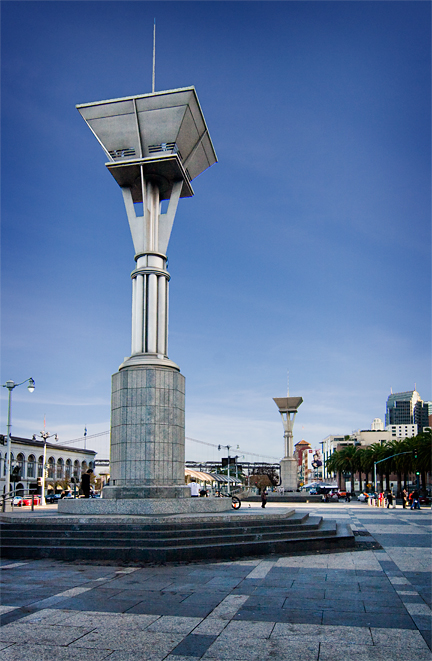F I R S T P R E V
P R E V 924
924 NEXT
NEXT LAST
LAST


Harry Bridges Plaza, The Embarcadero
Every day thousands of commuters exit the Ferry Building and cross Harry Bridges Plaza on their way to downtown San Francisco. The plaza is unique because in his day Bridges was one of the most hated men by the city's powerful elite.
The Australian-born, Bridges arrived in San Francisco on a ship in 1922. Working as a longshoreman he was appalled by the dock's working conditions and its corruption. Bridges rebuilt the local International Longshoremen's Association and along with the city's other marine laborers called a general strike in 1934 to shut down the city's shipping industry. Local shipowners offered Bridges a $50,000 bribe to call off the strike but he refused.
On July 3rd, a day that would later be called 'Bloody Thursday,' the owners attempted to break the strike and a pitched battle with ensued between union members wielding bricks, boards, and sticks and policeman with guns. Scores of strikers were wounded by gunfire during the battle and two were killed.
The strike was only settled by the intervention of FDR. The union's victory landed Bridges on the cover of TIME magazine, despite this there were attempts in the 1950s to brand him a communist. That case that was finally settled in Bridge's favor by the Supreme Court.
In 1958 Bridges and his fiance, Noriko Sawada actively fought the nation's anti-miscegenation laws by specifically traveling to Reno to challenge the state's law banning marriage between a white person and any person of the "yellow race." The couple sought and received a court order which allowed them to marry and which led to the 1959 repeal of all anti-miscegenation laws in Nevada.
As Harry Bridges grew in public stature he was eventually named to the San Francisco Port's board of directors by Mayor Joseph Alioto in 1970. Bridges died in 1990 and in 2001 on his 100th birthday the city named this plaza in his honor.
[
MAP F-15 ]